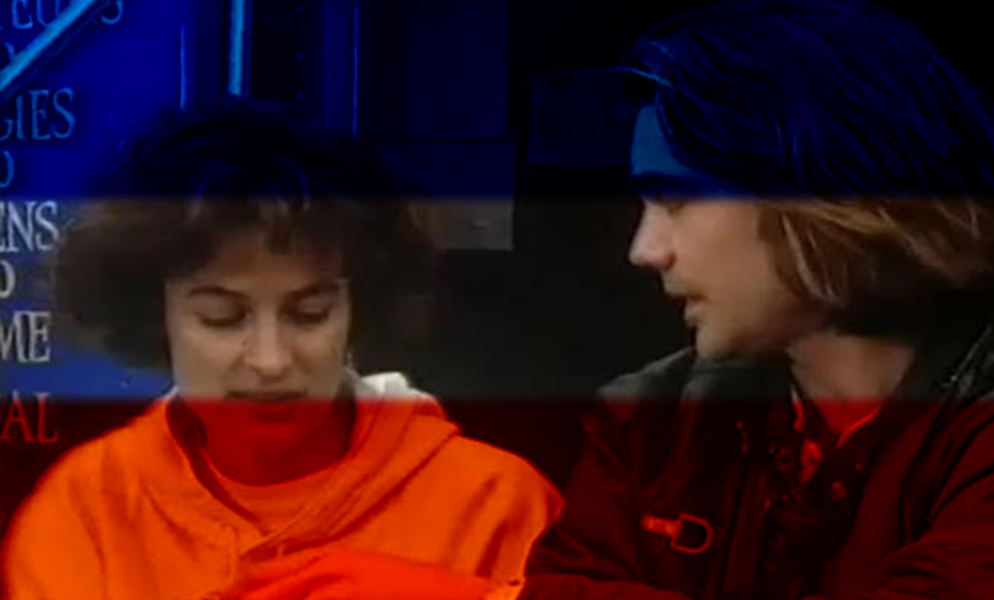
Also:
- It's Saturday Night
- 2. An autograph before you go
- 3. A new kind of game show
- 4. A rising exasperation with the quantity of dirt
- 5. The whole thing suddenly fell apart
- 6. Synthetic propensity
- 7. It was destined to be an anti-climax
- 8. This is your show now
- 9. The awesome scale of our wastefulness
- 10. Hands up those who couldn't care less
- 11. Together We’ll Be Ok
- 12. Decide the shape of ITV in the 1980s
- 13. Alan is too commercial
- 14. It worked like a dream
- 15. Older men, doing school boy tricks
- 16. Killing the Golden Goose
- 17. People love us to be sexy
- 18. The manure is worth more than the cattle
- 19. They were big in the States and we noted that
- 20. I’m still aggressive and I’m still handing out the insults
- 21. A new style of lunatic humour
- 22. The Habitat-bean-bag-hessian-wallpaper brigade
- 23. Thoroughly sinful
- 24. All carrots should be scraped, sliced and cooked
- 25. Back then it was radical stuff
- 26. Whatever they do, we can do it better
- 27. You'll have to take us as you find us
- 28. Entertainment that keeps on the move
- 29. It's the public that has to pay
- 30. The last we saw of either of them was their sad faces
- 31. Just shoot the bastard
- 32. Britain could clearly be facing its darkest hour
- 33. Any enthusiasm we may have had for continuing discussions is waning
- 34. It was considered by LWT and then put in a bottom drawer
- 35. Watch the redoubtable Terry take off
- 36. I thought it might be terrible and I wouldn’t enjoy it at all
- 37. Kamikaze Mastermind
- 38. We haven’t moved into luxury
- 39. We are investing in people
- 40. Delivered impeccably
- 41. He has to allow you to do your bit
- 42. All the anticipation of the great emotive point
- 43. If you want Russ Abbot to do it, then you have to accept me and my ideas
- 44. Let’s get straight into this
- 45. Unedifying Greed
- 46. We’ve got the fucking lot!
- 47. Scope for humour and danger
- 48. Pure Megablast
- 49. There’s lots of killing, but not much else
- 50. I wanted to make sure it was going to be disastrous
- 51. Oh dear – Auntie’s playing bingo!
- 52. A Shrivelled Little Thing
- 53. I shouldn’t have accepted it
- 54. We would be the spoilsports
- 55. The Most Sexless Person In Television
- 56. They’d have strung me up if I hadn’t chosen him
- 57. Is there some way to play with the internal constituent parts?
- 58. The most important entertainment programme of my time
- 59. The plumply pretty female duo
- 60. The audience just sort of started to freeze on him
- 61. More pilots than British Airways
- 62. There's going to come a time when you'll have to go to the BBC
- 63. A slightly pretentious manifesto
- 64. Things Look Very Precarious
- 65. It’s no good doing all the same old people all the time
- 66. That’s just not funny Bobby, it's corny - just don’t do that
- 67. Well bottom’s not funny
- 68. We Are The Funnymen
- 69. The powers that be listened to Denis
- 70. Stretchers never go up stairs
- 71. I was in obscurity until this series
- 72. I don’t care if he doesn’t like me
- 73. There’s such a passion for nostalgia right now
- 74. I Heard A Seat In The Stalls Go ‘Gerdonk!'
- 75. This is your show, folks, and I do mean you
- 76. There’s good news for perplexed fans of 3-2-1!
- 77. Taking on Blind Date would be a real challenge
- 78. You wanna bet on it?
- 79. The yarns worked their tried and tested magic
- 80. The Charge-And-Shout Brigade
- 81. I sat for a moment in silence, then turned in my chair and left the stage
- 82. We just weren't allowed into UK terrestrial television
- 83. Beadle’s A Prick
- 84. The interviewer always has to know when it's best to keep his or her mouth shut
- 85. Can you come up with a good solution for the Murder Weekend mystery?
- 86. He's not a goody- goody hero
- 87. The Sexism, The Dolly Birds, The Catchphrases
- 88. The feel of Saturday night
- 89. 1990 Who would employ an ex-alky with lowered self-esteem
- 90. It were a right smack in the face
- 91. Look Straight Into My Eyes And Everything Will Be Alright, That's A Promise
- 92. That's the last thing I was expecting, Jim
- 93. The characters and situations are real
- 94. Oh Man, There Go All My Women Fans
- 95. A Double Order of Talent
- 96. If there is an air of spontaneity about it, it’ll be genuine
- 97. NTV brings you ... empty rooms!
- 98. You’re BBC, you shouldn’t be here
- 99. If this doesn’t work out, we’re both snookered!
- 100. The humour of Beadle comes through humiliating people!
- 101. To allow such bilge on TV is an insult to the audience
- 102. Like a cup of cold sick
- 103. A litre of gin, ecstasy and crack cocaine
- 104. A reliable tent pole for Saturday evenings
- 105. It is in the cutlery drawer
- 106. Welcome to the new Saturday night
- 107. Congratulations, you have got the fucking Gen Game
- 108. The programme has done extremely badly and will be dropped after this series
- 109. Building the excitement and tension to a crescendo
- 110. He gives us our spirit of unity; we’d all like to strangle him
- 111. The worst programme currently on terrestrial television
- 112. I award the city state of Milton Keynes 100 credits!
- 113. There’s nothing that makes people scream, ‘Did you see that?’
- 114. It was of a standard frankly well below what the public would want
- 115. Waxing An Ape Is My Ambition
- 116. Don’t Get Mad, Get Even
- 117. The penalty shoot-out is the greatest ever endgame
- 118. 200 black boxes are strapped to the back of a cross-section of the nation
- 119. Better For You, Better For All Of Us
- 120. I mean who on earth thought that was a good idea?
- 121. I’m sure the tune was in there somewhere
- 122. This Time, You Decide
- 123. King of trash, that’s me
- 124. It’s about rejection now
- 125. They lost what Popstars was all about
- 126. Win the ads
- 127. A name in search of a series
- 128. Getting grief from the papers
- 129. I’m so pleased to be back on television
- 130. Saturday nights haven't been this interesting for 10 years
- 131. It’s the Usual Nonsense
- 132. The trip of a lifetime
- Epilogue: Why Haven't You Written a Series of Articles on Tuesday Night Telly?
|
Also joining Big Break on Saturday evenings in 1992 was a former Sunday night staple, That’s Life! Esther’s show was taking up the post-watershed slot on Sunday evenings for six months of the year, but with declining viewing figures, it was felt by BBC1 controller Jonathan Powell that a Saturday slot might be more appropriate, allowing the channel to screen more adult drama on an increasingly important night of the week. The first drama to take That’s Life!’s Sunday slot in January 1992 was Melvyn Bragg’s controversial A Time To Dance. In fact, That’s Life! had actually begun life on a Saturday evening in 1973, only moving to Sundays in the late seventies. Yet despite spending three years on a Saturday this second time around, Esther and the boys never really felt at home there – it was much earlier in the evening than its previous Saturday berth, and it was hard to conclude that viewers watching on a Saturday evening were looking for 45 minutes of consumer journalism, regardless of how entertainingly it was presented.
Further problems for BBC1 Saturday night came in the form of Moon and Son. Created by Robert Banks Stewart and starring Millicent Martin as a psychic investigator, the series was a flop from day one and, after some mutterings its “adult” content, the show was hastily ejected from 8pm and moved to after the watershed. Its old slot was filled by ancient repeats of Columbo. Moon and Son was one of a long list of unsuccessful dramas that BBC1 had attempted to launch on Saturday evenings since the rescheduling of Casualty in 1988. The House Of Eliot, which had been tried out on Saturday evenings in the autumn of 1991, was considered the most successful yet, but period drama- such a reliable genre in the seventies – was now wrong for Saturday evenings, and the subsequent series went out on Sundays.
In the end, the BBC cut its losses and, from September 1992, brought Casualty back to Saturdays, with the run extended from three to six months. This wasn’t originally the plan though. In 1991, with BBC1’s overall audience share declining from the highs the aided mid-80s, numerous meetings were held to try and arrive at a more effective schedule. Envious glances were cast at ITV, who had successfully turned The Bill from a short-run, hour-long weekly series into a twice-weekly, half-hour show running all year round and providing the channel with a reliable ratings success. The BBC decided to do the same with Casualty, scheduling it twice a week at 8pm to entice people over to BBC1 just as Coronation Street ended. However, Director General Michael Checkland vetoed the plan due to the imminent arrival of Eldorado. The DG was concerned there would be too many soaps and soap-like dramas on BBC1. As something of a compromise, Casualty’s run was extended and promoted to pre-watershed Saturdays.
With the return of Match Of The Day in August 1992, and the continued success of Noel’s House Party, suddenly BBC1’s Saturday schedules were more popular, more logically ordered and more consistent than at any point in the previous decade. The second series of Noel’s House Party, starting on October 24, was an even bigger success than the first. The most obvious reason was the arrival of Mr Blobby, who made his debut in the first programme of the new series. The rise of Mr Blobby is one of the more convoluted aspects of Saturday night television in the 1990s, given the character started as a parody of a children’s television character, and then became an actual children’s television character. At the start, he was used as a crutch to hang a few Gotchas on, with the likes of Wayne Sleep (his first victim), Garth Crooks and Valerie Singleton drafted in to take part in a spoof TV show, explaining various topics to young viewers, while Mr Blobby (with Noel in costume) caused chaos throughout. Within 12 months, he’d become a star, as proven when Noel took the House Party on tour to various racecourses around the country in 1993, and Blobby was mobbed. By the end of the year he’d scored a number one single.
Not all of the BBC’s new Saturday night ventures were as successful. The biggest flop of the year came from Public Enemy Number One. In this, Bobby Davro would welcome four celebrities into the studio, who would attempt to predict how many people would fall for various pranks. If they got it wrong, various embarrassing clips and forfeits would be forthcoming. With hidden camera stunts involved, it was no surprise the word ‘Beadle’ loomed large in the previews, someone Davro was keen to distance himself from – “As soon as people hear that it’s a practical joke show, they say it’s going to be like Beadle. The humour of Beadle – and it can be funny – comes through humiliating people, which can be cruel. This show is not like that.”
Perhaps a little more savagery would have been helpful in a show that completely failed to stick in people’s minds. The celebrity panellists featured the likes of Paul Shane, Peter Stringfellow and Keith Chegwin, and the stunts included Davro dressing as a sheepdog attempting to round up a flock. After six shows the series ended and never returned. Public Enemy Number One only really had two lasting legacies. The first came at the end of the series when the various celebs got their own back on Davro by placing him in stocks – which, unfortunately, were rather shoddily assembled and caused the presenter to plunge to the floor, breaking his nose in the process (though the show now lives on in BBC internal health and safety videos). However perhaps the series is now most notable for hiring a local radio DJ to act in the stunts, thus giving Dale Winton his first exposure on Saturday night television. Davro’s next BBC venture was based on his touring variety show, Rock With Laughter, but after being pencilled in for January 1993, it was then abruptly dropped from the schedules, as was the case on another three occasions.
Next Monday: To allow such bilge on TV is an insult to the audience
A Time to Dance, Bobby Davro, Casualty, Eldorado, Esther Rantzen, Frontpage!, It's Saturday Night, Jonathan Powell, Match of the Day, Michael Checkland, Millicent Martin, Moon and Son, Mr Blobby, Noel's House Party, Public Enemy Number One, Robert Banks Stewart, That's Life!, The Bill



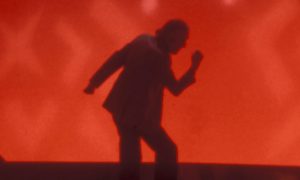










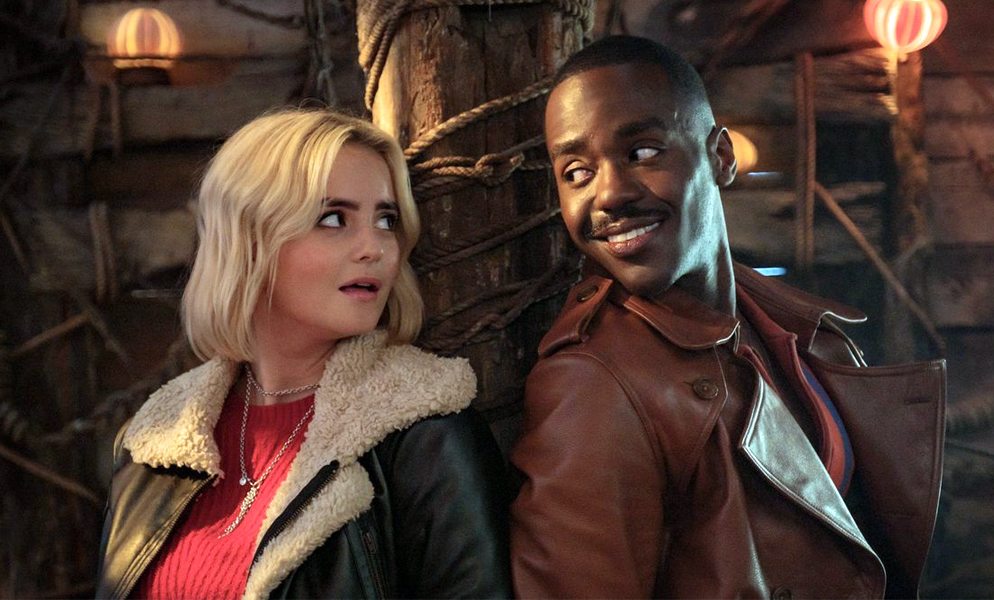
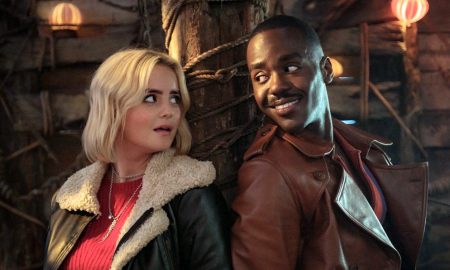
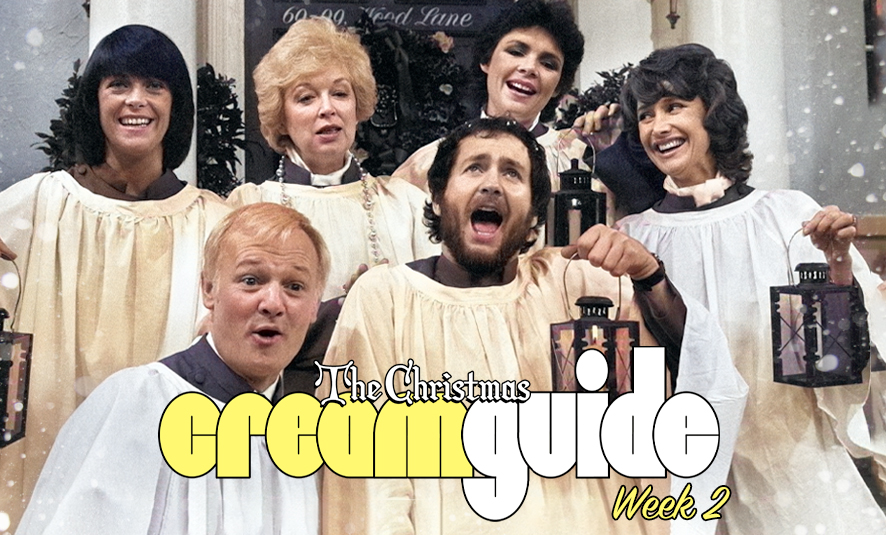
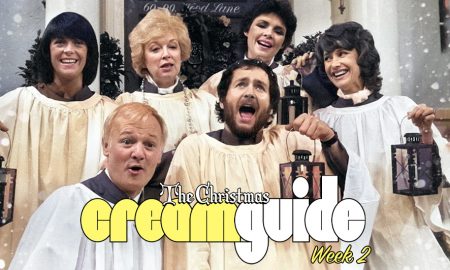
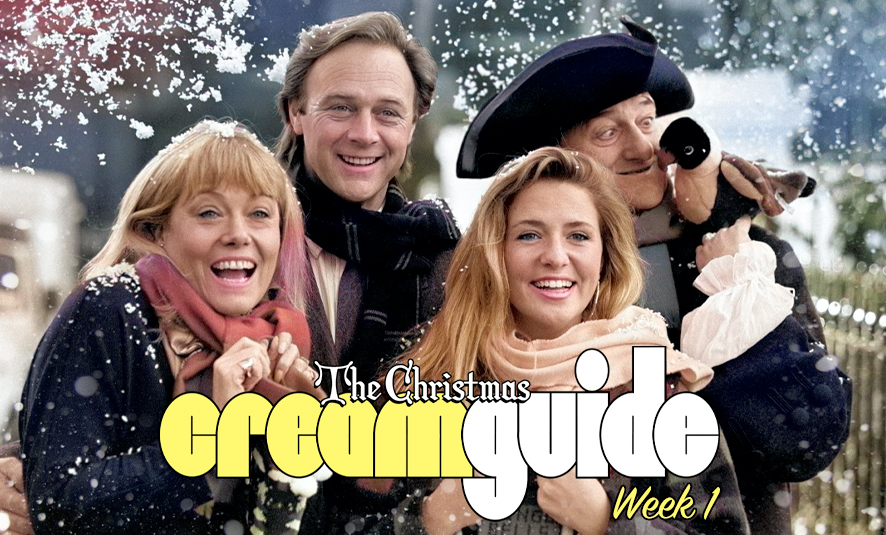
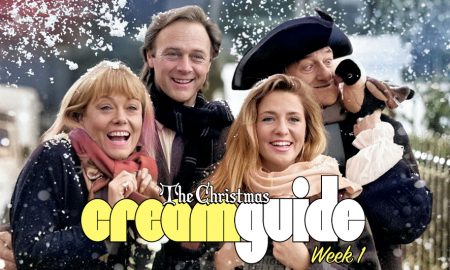

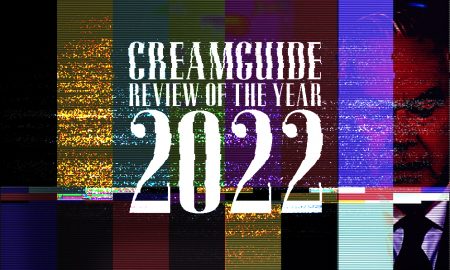

Glenn Aylett
August 19, 2019 at 10:01 pm
Little remembered now, but there was a junior version of That’s Life shown on BBC1 in the summer of 1979 with a junior version of Cyril Fletcher telling odd odes, and two of Esther’s male presenters supervising the junior version of the show. Never was recommissioned as far as I know, in the same way the revival of Juke Box Jury in the summer of that year was a one off. Interesting that the jury once featured a diverse panel of Elaine Page, Joan Collins, Alan Freeman and John Lydon, who sneered with contempt at his other judges and rubbished every record that was reviewed.( Check this out on Youtube).
David Smith
August 20, 2019 at 8:19 am
If I remember correctly there were actually two “mini Cyrils”, who alternated episodes – but I only discovered recently that one of them was Shaun Ley, who nowadays is a BBC News channel presenter (often appears at weekends).
Droogie
August 21, 2019 at 11:55 am
I remember the Junior That’s Life. I recall a consumer report prompted by a young viewer complaining that the fart powder on sale at his local joke shop didn’t work!
Richardpd
February 11, 2024 at 12:14 pm
Moon and Son was an unfortunate flop for Robert Banks Stewart after striking gold twice with Shoestring & Bergerac, I don’t think he created another series after it, but kept writing for other shows through the 1990s.
The House Of Eliot was a rare successful early 1990s drama for the BBC, but better suited for Sundays. It was probably the last non-soap to be made on videotape without a film effect.
I don’t remember Public Enemy Number One, but have heard of the stock stunt going wrong before. Light entertainment shows seemed to be another shaky genre for the BBC in the early 1990s, luckily with a better hit rate than dramas!
The likes of Little & Large were well past their sell by date when the axe finally full, but the BBC seemed to sometimes struggle to find anything decent for mid Saturday evenings.